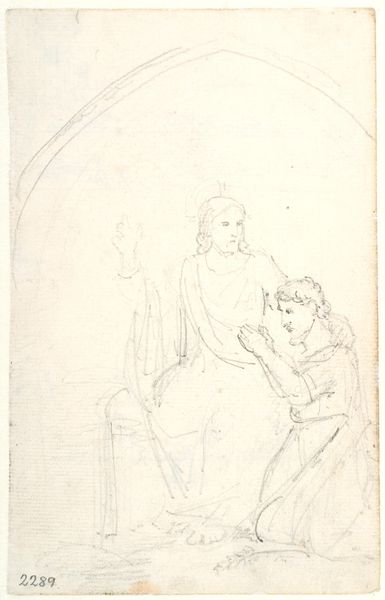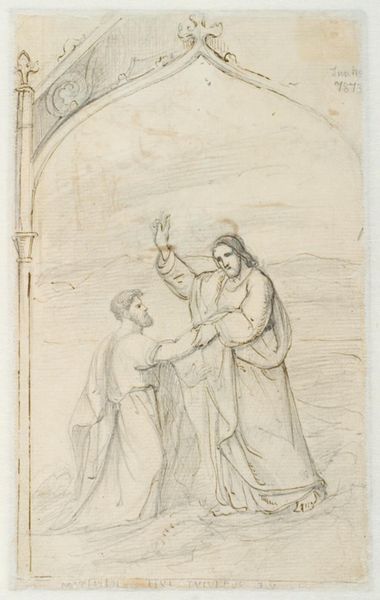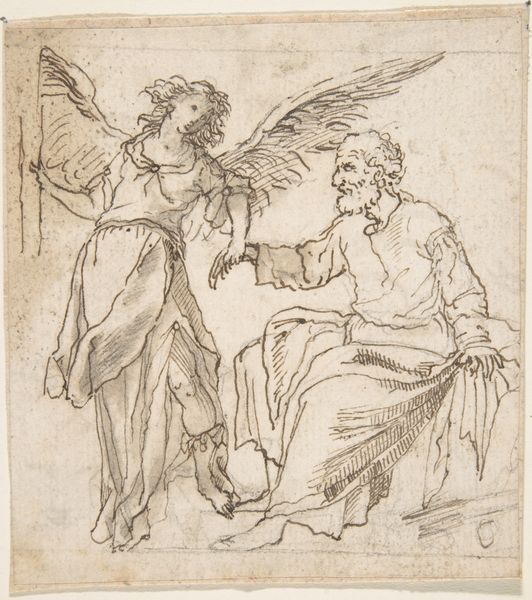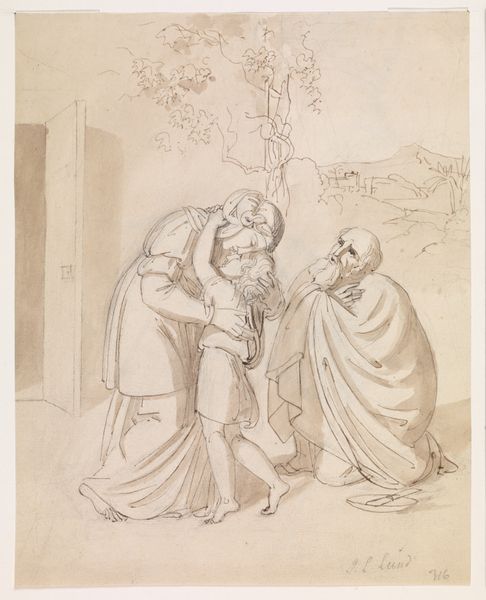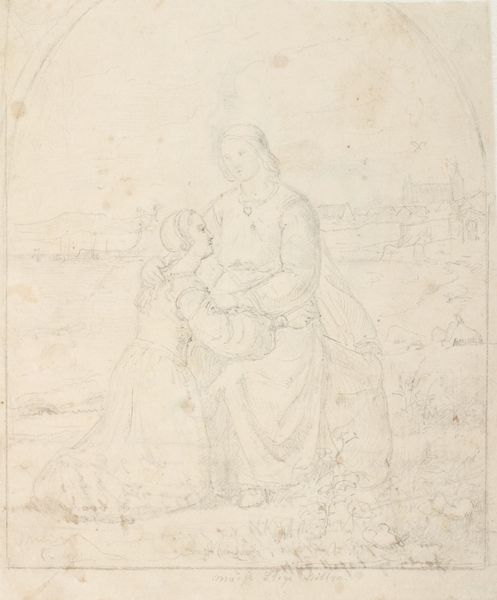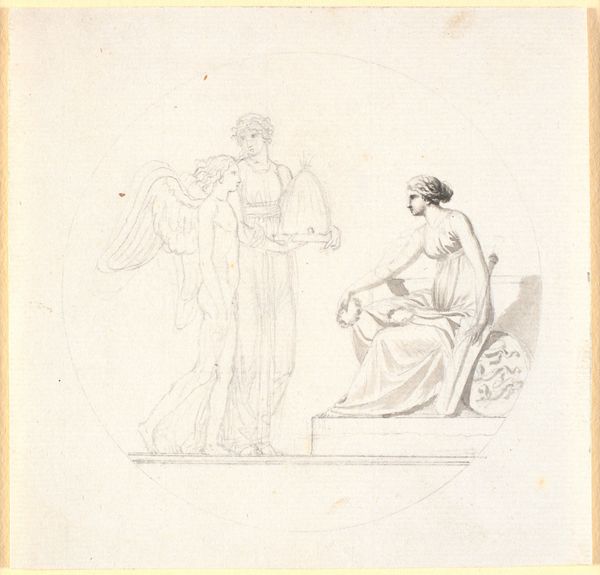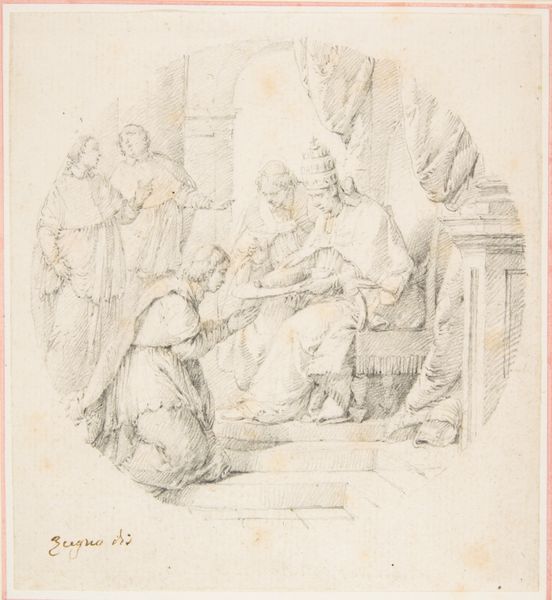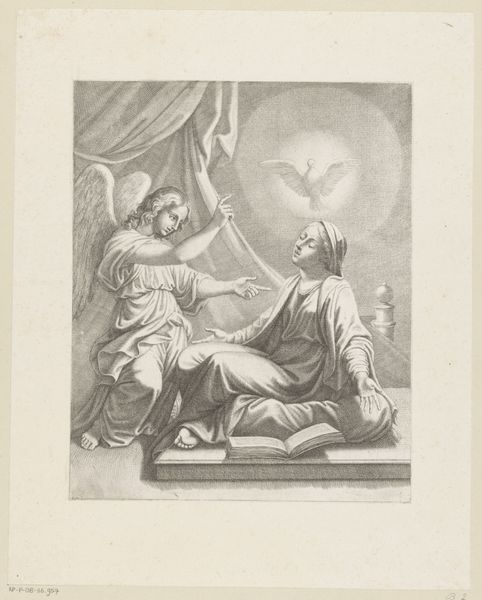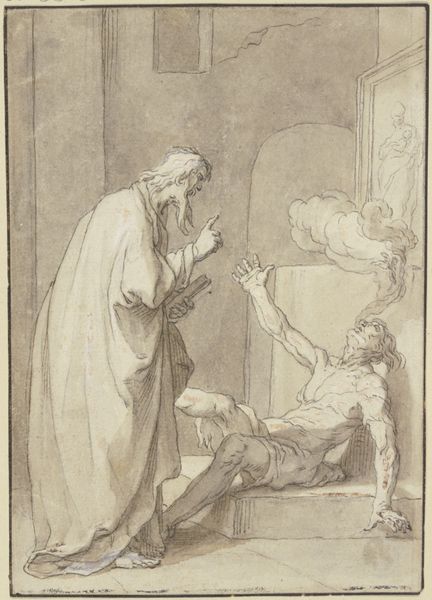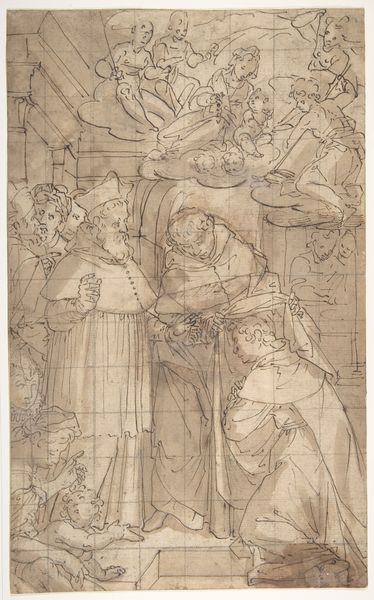
drawing, pencil
#
drawing
#
figuration
#
pencil
#
northern-renaissance
Dimensions: 308 mm (height) x 200 mm (width) (bladmaal)
Curator: Engel befrier den fængslede Petrus, or "Angel Freeing the Imprisoned Peter," a pencil drawing by Dankvart Dreyer, likely executed between 1816 and 1852. It's a fairly small piece, rendered with delicate lines. The overall impression is ethereal, almost dreamlike. What captures your attention in terms of the artistic decisions made by Dreyer? Editor: It's quite minimalist, isn't it? Just a few lines defining the figures and space. What I find striking is the angel's form: she appears almost weightless, contrasting with Peter, who seems more grounded and weighty. I'm curious about your interpretation focusing on composition and materiality. How do these choices shape the narrative? Curator: Indeed, let’s consider the line quality itself. Dreyer utilizes a very light, almost hesitant touch, which imbues the scene with a sense of transience. Observe how the angel’s form lacks firm outlines. This artistic decision accentuates the miraculous nature of the event. In contrast, Peter, although still lightly sketched, possesses slightly more defined contours. The use of shadow creates a sense of depth that anchors him to the earth. Wouldn't you agree that the variance suggests a separation between the mundane and the divine? Editor: That makes a lot of sense. The linework clearly defines the status of each person. So, the softness of the angel against the comparatively harder-edged prisoner emphasizes that contrast, it's less about who they are in the story, and more how Dreyer has visualized them on paper. So what exactly does this juxtaposition represent? Curator: One could read this composition as a dialogue between earthly confinement and celestial intervention. The lightness of the angel, achieved through delicate and minimal lines, becomes a visual metaphor for divine grace, a liberation not only from physical constraints but also from earthly gravity. This allows us to observe that the intrinsic qualities communicate liberation by virtue of technique, independent of the biblical story it reflects. Editor: That's a really insightful way to look at it. So, by focusing on the materials and form, we discover layers of meaning that the artwork offers. It enriches how we see and describe the art. Curator: Precisely! This helps us grasp how fundamental form and artistic technique are in generating profound meaning within an artwork.
Comments
No comments
Be the first to comment and join the conversation on the ultimate creative platform.
